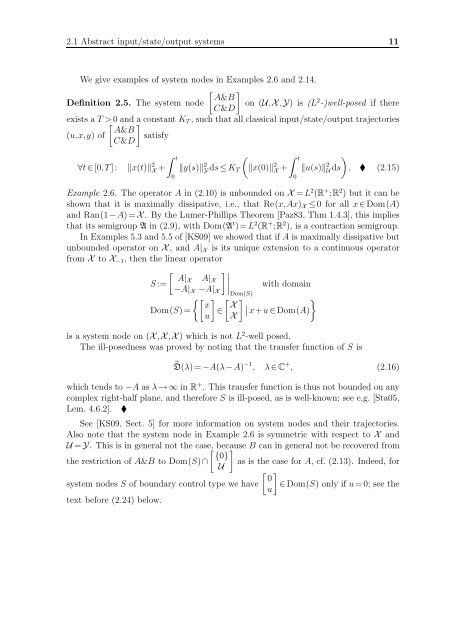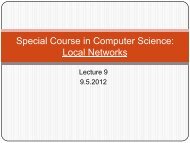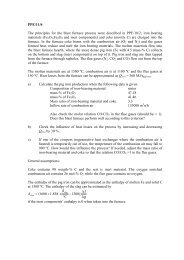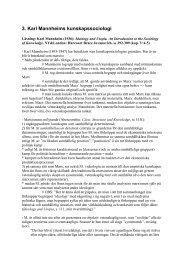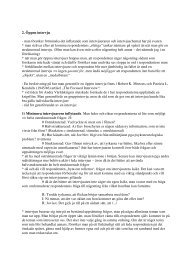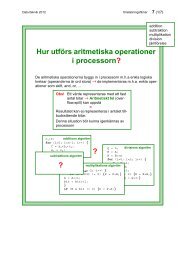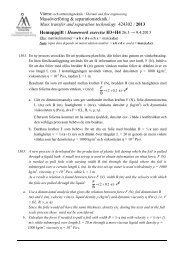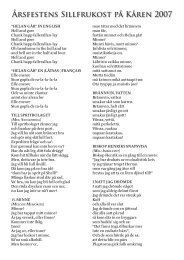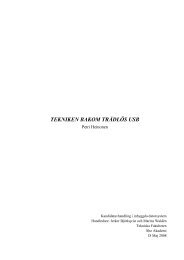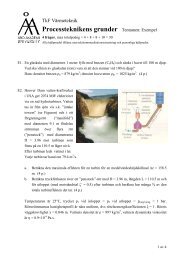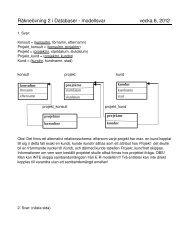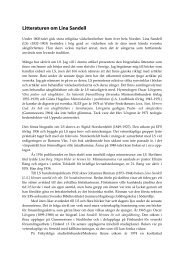Mikael Kurula - Åbo Akademi
Mikael Kurula - Åbo Akademi
Mikael Kurula - Åbo Akademi
Create successful ePaper yourself
Turn your PDF publications into a flip-book with our unique Google optimized e-Paper software.
2.1 Abstract input/state/output systems 11<br />
We give examples of system nodes in Examples 2.6 and 2.14.<br />
<br />
A&B<br />
Definition 2.5. The system node on (U,X,Y) is (L<br />
C&D<br />
2-)well-posed if there<br />
exists a T >0 and a<br />
constant KT, such that all classical input/state/output trajectories<br />
A&B<br />
(u,x,y) of satisfy<br />
C&D<br />
∀t ∈[0,T]: x(t) 2 X +<br />
t<br />
0<br />
y(s) 2 Yds ≤KT<br />
<br />
x(0) 2 X +<br />
t<br />
0<br />
u(s) 2 <br />
U ds . (2.15)<br />
Example 2.6. The operator A in (2.10) is unbounded on X =L2 (R + ;R2 ) but it can be<br />
shown that it is maximally dissipative, i.e., that Re(x,Ax)X ≤0 for all x ∈Dom(A)<br />
and Ran(1−A)=X. By the Lumer-Phillips Theorem [Paz83, Thm 1.4.3], this implies<br />
that its semigroup A in (2.9), with Dom(At )=L 2 (R + ;R2 ), is a contraction semigroup.<br />
In Examples 5.3 and 5.5 of [KS09] we showed that if A is maximally dissipative but<br />
unbounded operator on X, and A|X is its unique extension to a continuous operator<br />
from X to X−1, then the linear operator<br />
<br />
A|X A|X Dom(S)<br />
S :=<br />
with domain<br />
Dom(S)=<br />
−A|X −A|X<br />
x<br />
u<br />
<br />
∈<br />
<br />
X x+u<br />
∈Dom(A)<br />
X<br />
is a system node on (X,X,X) which is not L 2 -well posed.<br />
The ill-posedness was proved by noting that the transfer function of S is<br />
D(λ)=−A(λ−A) −1 , λ ∈C + , (2.16)<br />
which tends to −A as λ → ∞ in R + . This transfer function is thus not bounded on any<br />
complex right-half plane, and therefore S is ill-posed, as is well-known; see e.g. [Sta05,<br />
Lem. 4.6.2]. <br />
See [KS09, Sect. 5] for more information on system nodes and their trajectories.<br />
Also note that the system node in Example 2.6 is symmetric with respect to X and<br />
U = Y. This is in general not the case, because B can in general not be recovered from<br />
{0}<br />
the restriction of A&B to Dom(S)∩ as is the case for A, cf. (2.13). Indeed, for<br />
U<br />
<br />
0<br />
system nodes S of boundary control type we have ∈Dom(S) only if u=0; see the<br />
u<br />
text before (2.24) below.


